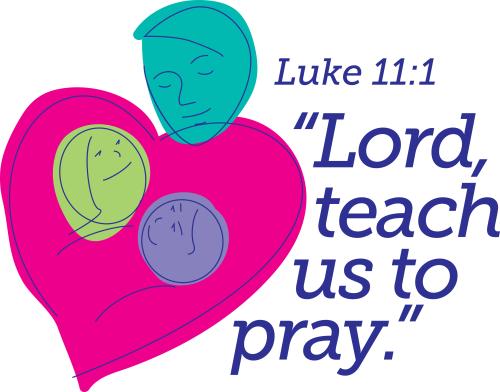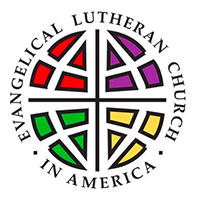
Jesus’ Prayer Tutorial
Jul 28, 2019
What if, out of the blue, I invited one of you to come forward and lead a prayer for the ministry of Faith Lutheran Church, and there was no time to write one or look one up in the hymnal? There might be a few willing people, but I’m guessing that many would object, offering two reasons. One would be, “I don’t know how to pray (at least not in public), and the other would be, “I’m too reserved to speak – much less pray – in front of people.”
Now, those are valid reasons, but also good reasons to view today’s Gospel reading as a tutorial in praying, which we may need more than we realize. For example, seminary professor Rolf Jacobson reflects that at the congregation he attends has a Prayer Partners Program that pairs up youth and elders. Several times during a year they sit together in worship, but the pairs never actually pray together, although it’s hoped that they pray for each other in private. Why is this so? It’s because people (Lutherans?) often are not comfortable praying aloud with another person or in a group, beyond a meal prayer or memorized prayer. (1)
So, let’s see what Jesus has to teach us about prayer. In today’s Gospel lesson, we are told that Jesus was praying. There’s no information about where this was happening, or exactly when, or if it was a special occasion. It’s ironic that in this presentation of Christianity’s most familiar prayers – what we call “The Lord’s Prayer” – the details are sparse. The reality is that since, for Jesus, praying was a regular event, remembering when or where or why this event occurred probably was not possible for the Gospel writers. Besides, it’s the prayer that’s important.
Yet, did you notice anything unusual about Jesus’ prayer in Luke 11? Look at it again; it’s not what we are used to hearing or saying when praying, “The Lord’s Prayer.” There’s no, “Our Father who art in heaven,” or “thy will be done” or “for thine is the kingdom and the power and the glory, forever and ever.” Instead, the prayer is rather spare; there are no flourishes or extra words. Could this be a first-century text or tweet prayer? Or, could Jesus be teaching us to pray in a no-frills style?
It’s pretty simple. First, we acknowledge that God is holy (sacred, worthy of awe/adoration). Second, we ask that God’s will and ways would thrive among us. Third, Jesus’ prayer covers sustenance (food), relationship (forgiveness), and safety (bring us through times of trial.) It covers the basics, the essentials of life. But what about the rest of the passage? What are we to glean from the story of going to a friend in the middle of the night and asking for bread and the command to ask, search, and knock?
It’s important to remember that these are parables, linked to Jesus’ prayer, and intended to teach us more about prayer. According to Pastor David Lose, Jesus’ parable invites us to imagine that, like a man confident of his neighbor’s hospitality, we should ask for whatever we need … and keep asking. In other words, our prayers should be direct, should express what’s on our hearts, be honest. And, the ask, seek, knock “sayings” teach us that just as we desire to give those who we love good things, so does God, even more, wants to give us that which is good. Because we trust this is true, we pray. (2)
Finally, in this tutorial, we come to the phrase that seems to be out of place, but in my opinion, is the most important sentence. The Gospel reading ends with Jesus saying, “…how much more will the heavenly Father give the Holy Spirit to those who ask him!” My question is, what are “those who ask him” requesting? Does this sentence refer to all of people’s prayer petitions or just requests for the Holy Spirit? Does it cover requests for healing, for financial help, for a new job, for wisdom? In other words, could the text say, “how much more will the heavenly Father give the Holy Spirit to those who ask for a successful surgery.”
I’d say the answer is, “yes”; whenever we ask, seek, knock what we will receive, whether we realize it or not, is the Holy Spirit. When it seems that our prayers are unanswered, God has provided a deeper response, and that response is the Holy Spirit, which certainly is with us to strengthen and guide, and maybe a work in the situation in a multitude of other ways.
Let me offer an example with which most of us can identify. Let’s say that I have a friend who is ill, and I pray something like this: “Loving God, by the power of the Holy Spirit, heal my friend, and guide me to provide support in the best possible way. But, my friend dies, so I am upset and rightly claim that I did not receive that for which I prayed. Still, my prayer was answered, it was answered in the form of the Holy Spirit, who strengthens me and comforts me in the midst of the grief that I hoped would not come.
Our prayers are always answered, and that answer is the Holy Spirit. The Holy Spirit is the good that God gives when God wants what’s best for us, just as an earthly parent wants what’s best for his or her child. Now, whether or not we feel that’s the case, and wonder why God does not respond in another way, is the topic of another sermon. And as we struggle with those dilemmas, we should hear the voice of Jesus saying to us, “…how much more will the heavenly Father give the Holy Spirit to those who ask.”
So, what have we learned about prayer today? Our prayers should be simple, direct, honest, persistent, cover the basics of sustenance (food), relationships (forgiveness) and safety (bring us through difficult times), and we should trust in God’s love for us. And, when we ask, seek, knock, God gives us the Holy Spirit, who empowers and guides, comforts and strengthens us as the situation for which we prayed unfolds.
With those guidelines in mind, practicing praying, even praying with others, is a good idea. Professor Jacobsen, who I mentioned earlier, began starting some of the classes he team-teaches by praying with and for his partner teacher. They start by sharing a “high” and a “low” from the previous week and they pray for each other. He says he’s regularly stunned by how moved students are by seeing two of their teachers pray for each other; they have never before seen it happen.
Are you brave enough to try this with your spouse, or friend, family, or co-worker? I acknowledge it would be a step of faith for many of us, but remember, keep it simple, be direct, honest, persistent, cover the basics and trust in God’s love for us. And, remember, God always answers our prayers, and that answer is the Holy Spirt.
So, what if out of the blue, I invited one of you to come forward and lead a prayer for the ministry of Faith Lutheran Church? Let’s try it….
(1) “Teach Us To Pray” by David Lose, July 22, 2013, “Dear Working Preacher”, www.workingpreacher.com
(2) Same as #1






